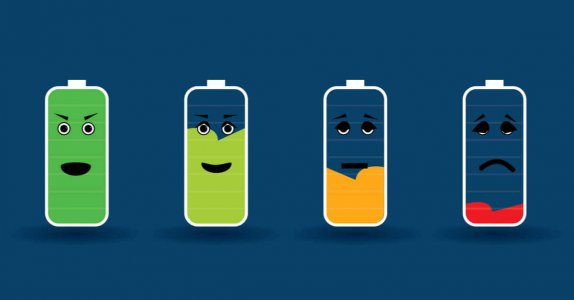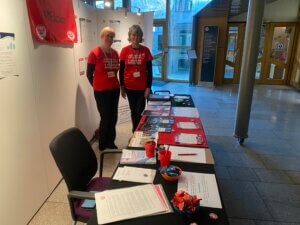Ingebjørg Midsem Dahl has severe ME, and has written a book about pacing called, “Classic Pacing for a Better Life with ME.”
She attributes her slow but steady improvement from being severe to now only housebound to following her own advice on pacing, and from various medical treatments, such as treatments for secondary infections.
There are several types of energy. By using these in clever ways, you can get more out of your energy levels. In an article in the CFIDS Chronicle in 2000, the exercise physiologist, Stacy Stevens, writes about the four types of energy: physical, mental, social and emotional/spiritual energy.
Physical energy is about movement. Activities where you walk, stand or move your body, require physical energy. Mental energy is used when the activity requires concentration, for instance when you watch TV or read a book. Social energy is about being with and talking to other people. Stevens also mentions that you use social energy when you attend a sports event. Emotional energy is used when you cope with your illness, during religious service and when you cope with stressful events and other situations which invoke emotions.
Each type of energy has its own type of exhaustion, which comes when the batteries are about to go flat. With a bit of experience, you can learn to differentiate between each type of exhaustion. That makes it easier to choose the right strategy for recharging your batteries.
Different Types of Battery Charging
The different energy batteries are charged in different ways. The physical, mental and social batteries all share the characteristic that they are charged by resting.
When you’re tired after socializing for a long time, you cannot charge your batteries by continuing to talk. If your legs are tired after walking a significant distance, you cannot recharge them by continuing to walk. The emotional batteries are different, because they can be charged by activity. Some activities drain us emotionally, while others recharge us. Most people find that a nice chat on the phone with a good friend perks them up emotionally, even if their heads, mouths and hands may tire because of listening, talking and holding the phone. On the other hand, an uncomfortable meeting with a social worker can drain you completely emotionally, even if the meeting may have been shorter than the cosy chat on the phone.
Rest can be necessary even after emotional activity, especially if strong emotions have been involved. A really good piece of news requires emotional energy, even if it may give energy in some ways. Even though the emotional batteries are charged in a slightly different way to the other ones, many of the strategies for battery charging are still relatively similar.
Switching
One of the most important strategies for charging your batteries is switching between activities which require different types of energy.
Healthy people can recharge their physical batteries while doing physically inactive, mental and social activities. They can then charge their mental and social batteries by doing something purely physical, for instance running.
When you have ME, it’s usually necessary to also include some total rest, but you can often reduce your need for total rest somewhat, by switching between activities which requires different types of energy. If you can be up for a while, it’s often less draining to do several short activities which require different types of energy, than doing the same activity for a long time. You might do something mental, like watching half an episode of a TV show, and then do something physical, like a bit of tidying, followed by something social like a short phone call. After a rest break, you can watch the rest of the TV show. You can use the same principle if you have to rest between every activity. The body needs versatility and variation. The rule of thumb is that it’s better to spend a little of all the types of energy, than to use a lot of one of them and none of the rest.
By varying the use of your energy reserves, you can usually avoid problems, like losing muscle mass, because you are using your body too little, or having constant brain fog because you are using your body so much there’s no energy left for the head. Similarly, severe loneliness can be prevented by making sure that some of your energy goes into meaningful social contact.
Switching When Using Emotional Energy
An effective way of charging the emotional batteries is a switch between activities which drain you emotionally and activities which charge your emotional batteries. If you only do work type activities all the time, your emotional batteries will gradually be drained more and more. If you insert nice activities which you enjoy, your emotional batteries will recharge throughout the day. Preferably, you should try to arrange things so that you get these bouts of battery charging several times a day. If in a particular day you are forced to spend all your energy on activities that drain you emotionally, you can weigh up for this by prioritizing activities that will recharge you the next day.
A young British woman with ME said that her doctor advised her to make two lists: one with work type activities and another with enjoyable ones. Every time she had done something from one list, the next activity should be from the other list.
The Scottish ME-doctor Darrel Ho-Yen has found that consciously charging the emotional batteries when you feel that they’re beginning to get depleted is an efficient way of preventing depression. He teaches his patients to create a box with things that can charge their emotional batteries on bad days. In your box you can put funny videos, books, audiobooks, comics, pictures, albums full of pleasant memories, and alike. Dr Darrel Ho-Yen says “When patients try this, they find that it works. They often say “It is so simple” or “I don’t know why I didn’t make the effort before”.
The big challenge in ME is that the activities that recharge our emotional batteries usually drain us either physically, mentally, socially or all three at once. If we overdose our attempts to recharge our emotional batteries, we risk depleting our other batteries completely. To prevent this we need pacing.
Pacing
Pacing is a method for managing low physical, mental and social energy levels. It’s about learning to recognise the body’s own limits and staying within them. If you do this systematically, most people with ME find that their limits slowly widen. You have to respect your limits in single activities throughout the day, and for longer periods of time, like weeks and months.
In strictly defined neurological ME the symptom level is not stable. You’ll feel gradually worse when you go past a certain limit. The symptoms which occur during activity are therefore warning signs. You should stop at the first warning sign, and preferably slightly before that. If you get concentration problems and headache 15 minutes into a TV program, you can stop after 10 minutes, have a rest, and then do something else afterwards. If you’re worn out after a three hour shopping trip, you can stop after one hour and see if that works better. You have to learn to keep your symptoms at a stable low level. They don’t necessarily go away, particularly not at first or if you have severe ME, but pacing usually alleviates the symptoms enough to make ones everyday life easier.
Pacing requires a lot of experimentation, trial and error, and at first you’ll often feel that you’re failing. It takes time to find out what the body can cope with. One trick is to look at what you can manage on a bad day. Then you can split up the activities and move them around so that you get a good switch between the different activities and rest. Little and often is better than a lot every once in a while. If you stick to such a flexible routine even on good days, you’ll usually find that the ups and downs begin to even out, and that your limits begin to expand so that you gradually feel better. When the improvement gets going you can increase the activity level in a very gradual and controlled way. Pacing is not an exercise program. You have to continue to stay within you energy limits, even in an improvement phase. This can prevent many relapses. I’ve written many texts about pacing where I discuss the subject in much greater depth.
Since most people need more information than a short summary like this in order to carry out pacing, I recommend reading this other material:
You can find the articles and the first chapter of my book “Classic Pacing for a Better Life with ME” on my website www.pacinginfo.eu
A number of short video talks are available on the book’s Facebook page www.facebook.com/pacinginfo. You don’t need a Facebook account to view this page.
Energy Conservation
Energy conservation is about finding less strenuous ways of doing things so that you get more out of your energy reserves. The greater number of energy types that a particular activity demands, the more energy consuming it is.
A visit from a friend is less strenuous if both of you are lying on the sofa while you’re talking, instead of chatting in the kitchen standing up. Then the activity is only social, instead of being both physical and social. Similarly it’s less exhausting to amble about in a quiet garden, than walking through a shopping centre on a busy Saturday, when you’re bombarded by sensory stimuli.
Doing one thing at a time, such as either listening to music or going for a walk, but not both at once, is an important part of energy conservation.
Other examples of energy conservation are finding the most comfortable work position, placing everything you need within reach, and removing background noise and other things that distract you. The emotional strain of an activity can also be reduced. Sometimes you can remove it entirely, for instance by going shopping on your own, instead of doing it with a friend who’s difficult and usually argues. Other times you can save emotional energy by thinking through in advance what you want to say and do. You can also bring somebody along with whom you cooperate well, and who can support you along the way. This is particularly effective if you discuss the strategy for what you want to say and do in advance.
Rest
Rest may well be the most obvious way of charging your batteries. Most people with ME benefit from having some total rest breaks during the day, but it varies a lot how much you need. At the healthier end of the ME spectrum, five minutes per hour may be what is needed to keep up your energy level all day. Others need far more rest.
It’s a good idea to create a routine of set rest breaks, which you take even on good days. Be aware that many and long rest breaks may be a sign that your activity periods are too long and strenuous. If you use the other techniques which I mentioned in this article, you may manage with less rest and still feel better. People who are bed-bound still usually need large amounts of total rest.
Please note that you don’t get much out of your rest breaks if you spend them ruminating about difficult topics. You even risk that such rest breaks are more strenuous than doing an enjoyable, low energy activity. It’s easier to get something out of your rest breaks if you decide that resting is a useful activity that your body needs, instead of being a waste of time. It also helps to turn your thoughts to cosy day dreams every time you start thinking about something difficult.
When you use relaxation techniques, you usually get more out of your rest breaks because the rest becomes deeper. Relaxation is particularly useful because it charges all four of the energy batteries at once, even the emotional batteries.
In many relaxation techniques, you are asked to imagine that you’re in a beautiful environment, for instance that you’re sunbathing on a beach or going for a walk in the mountains. This is a way of getting good experiences without having to do anything, something which is particularly useful for people who are very severely ill. You simply get a break from the illness. In other relaxation exercises, you repeat affirmations inside your head. You may start with something that makes you relaxed, such as “I’m calm and relaxed”. Later, you can change to other sentences, such as “I’m worth something” or “I’m strong, but I know that no one has to be strong all the time”. Such sentences can turn your mind away from negative thoughts, and may improve your self-worth.
It takes time to learn relaxation, but for most people it’s worth the effort. At the moment, it easy to get hold of books and CDs with instructions, and there are many free apps you can download to your mobile phone, such as Insight Timer.
Battery Charging in the Long Run
When you use pacing, switching, energy conservation and rest for charging your physical, mental and social batteries, the illness usually calms down so that it’s easier to live with. In the long run, most people find that the limits for what they can tolerate, expand. It varies greatly how long this takes and how much improvement people experience, but even people who’ve been very ill for many years can experience significant improvement. Charging the emotional batteries prevents depression and facilitates joy and contentment in your everyday life. Together, charging the four batteries provides a basis for a good life with ME.
Reference: The quote from Dr Darrel Ho-Yen is from the article “How to: Float (and not Drown)” from Tymes Magazine, issue 31, winter 2000.
©Copyright Ingebjørg Midsem Dahl 2019







5 thoughts on “Charging Your Batteries”
Hi there
My older brother ( 57 ) has suffered with ME for roughly 15 years now. He has not been able to work at all during this time. He has a very tough time with his ME
We recently lost both our parents. This has hit us all hard. But of course by brother is finding it very tough. I am trying to find help / solutions wherever I can.
Hi Catherine,
I am so sorry to hear about the loss of your parents, and that your brother is struggling with ME. It is such a difficult disease.
Are you familiar with our Facebook groups where patients and caregivers support one another and share their experiences:
Living with ME (patients only): https://www.facebook.com/groups/211058135999671/
Caregivers of people with ME (caregivers only): https://www.facebook.com/groups/meactioncaregivers/
<3<3<3
Thank you for sharing your info. I truly appreciate your efforts and I am waiting for your further
write ups thanks once again.
Thank you very much! I’m glad you found this useful. You can find more of my articles on my website, http://www.pacinginfo.eu 🙂
Comments are closed.